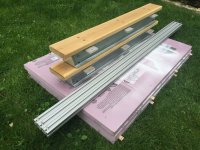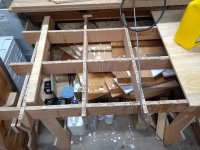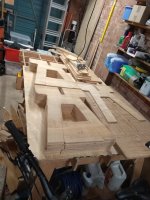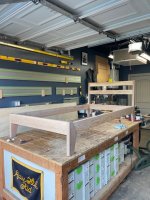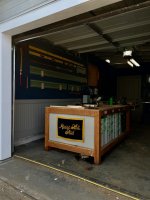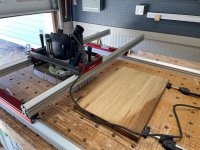Hey folks,
First-time poster here. I am starting a new journey into woodworking and hoping to create an integrated set of cabinets and shelves in our living room. But, knowing how ambitious and highly visible this item will be in my house, I plan to take the next 6- 12 months to learn, screw up, learn, screw up, etc, on a half dozen smaller projects where the stakes are not so high. So, the first project on deck is a pair of big shoe bins on drawer slides for my kids' shoes in the mudroom.
Using the 'buy once/cry one' philosophy, I went to my local Woodcraft and got myself a handful of Festool items (TS 55 tracksaw, ES EC 150/3 sander, EC 36 dust extractor) and an MFT/3 kit.
Over the last few days, I've been getting familiar with all the gear, but I've been disappointed by how inconsistent and non-square the flip-up MFT rails fit onto the table. And when I tried to bring in a 4' x 8' sheet material, it was awkward to cut down. I was cutting down some light 1/2" foam insulation in this case, so I can only assume it'll be harder with MDF, plywood, etc.
Rather than upgrading the MFT with an MFT Aligned Guide Rail Support Upgrade Kit by TSO comes to mind, I am planning on returning the MFT/3, and now considering making my own oversized MFT using the Parf guide system from UJK.
Some questions:
Any thoughts would be appreciated.
Cheers
First-time poster here. I am starting a new journey into woodworking and hoping to create an integrated set of cabinets and shelves in our living room. But, knowing how ambitious and highly visible this item will be in my house, I plan to take the next 6- 12 months to learn, screw up, learn, screw up, etc, on a half dozen smaller projects where the stakes are not so high. So, the first project on deck is a pair of big shoe bins on drawer slides for my kids' shoes in the mudroom.
Using the 'buy once/cry one' philosophy, I went to my local Woodcraft and got myself a handful of Festool items (TS 55 tracksaw, ES EC 150/3 sander, EC 36 dust extractor) and an MFT/3 kit.
Over the last few days, I've been getting familiar with all the gear, but I've been disappointed by how inconsistent and non-square the flip-up MFT rails fit onto the table. And when I tried to bring in a 4' x 8' sheet material, it was awkward to cut down. I was cutting down some light 1/2" foam insulation in this case, so I can only assume it'll be harder with MDF, plywood, etc.
Rather than upgrading the MFT with an MFT Aligned Guide Rail Support Upgrade Kit by TSO comes to mind, I am planning on returning the MFT/3, and now considering making my own oversized MFT using the Parf guide system from UJK.
Some questions:
- Has anyone made a 4' x 8' MFT?
- Does it make sense to make such a large MFT? Is it just too unwieldy to have such a big ass table in your workshop?
- Does anyone have experience using sawhorses as legs to hold up their MFT? I'm working in my garage and have plenty of room for it, but I need to be able to put the table away when I park my minivan.
Any thoughts would be appreciated.
Cheers


